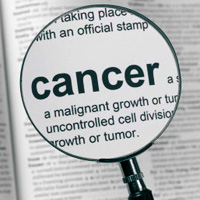Testicular germ cells tumors in adolescents and young adults: Management and outcomes from a single-center experience

Accepted: May 7, 2021
All claims expressed in this article are solely those of the authors and do not necessarily represent those of their affiliated organizations, or those of the publisher, the editors and the reviewers. Any product that may be evaluated in this article or claim that may be made by its manufacturer is not guaranteed or endorsed by the publisher.
Authors
Objective: To investigate and compare the effectiveness of active surveillance versus post-surgical active treatment, in patients with testicular germ cells tumor (TGCT).
Materials and methods: We retrospectively analyzed 52 patients who underwent surgery for TGCT from January 2009 to December 2014. All the patients were divided into two age groups: the Group A included children-adolescents from 18 months to 21 years old, while the Group B comprised young adults from 22 to 39 years old. Clinical, histopathological, therapeutic and follow-up data were collected.
Results: Overall, 22 patients (42,3%) were enrolled in the Group A and 30 patients (57.7%) were categorized in the Group B. Inguinal orchiectomy was performed in all patients. Retroperitoneal lymphadenectomy was performed in 4 patients (7.7%). Post-surgical management differed based on clinical stage, resulting in active surveillance or adjuvant therapy. After an average 7 years follow-up period (range: 3.5-9.0 years), the overall survival rate is 100%. The relapse risk is significantly higher for the patients in the Group B, displaying a recurrence free-survival rate of 72% versus 95% (Group A); 11 relapses (21.1%) were recorded 2 years after surgery. Of these, 3 recurrences (12.0%) occurred in patients undergoing an active surveillance approach, while 8 (29.6%) in patients subjected to an active treatment.
Conclusions: The excellent prognosis in both age groups confirms the high curability of this neoplasia. The active surveillance could represent an optimal option for low recurrence risk tumors. However, post-surgical treatments should be taken into consideration for TGCT with high risk factors, including tumor size, lymphovascular and rete testis invasion.
How to Cite
PAGEPress has chosen to apply the Creative Commons Attribution NonCommercial 4.0 International License (CC BY-NC 4.0) to all manuscripts to be published.

 https://doi.org/10.4081/aiua.2021.3.301
https://doi.org/10.4081/aiua.2021.3.301



